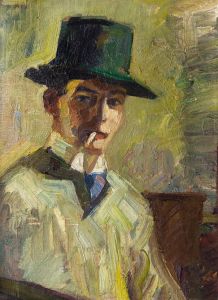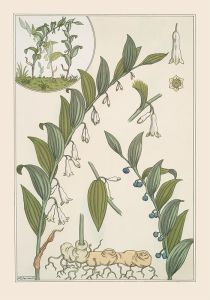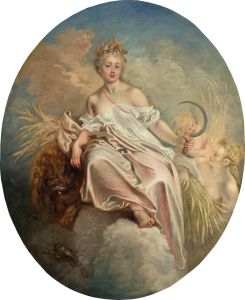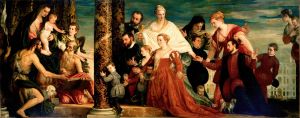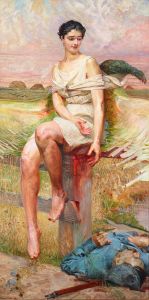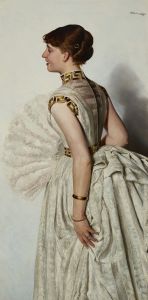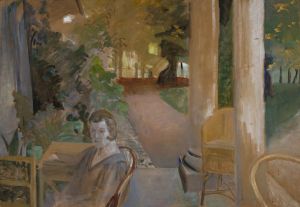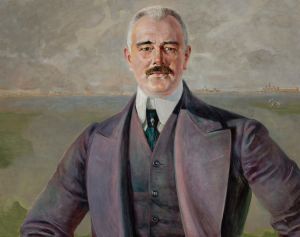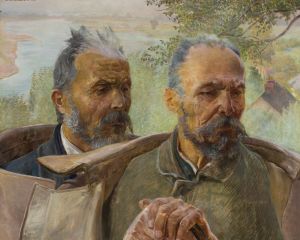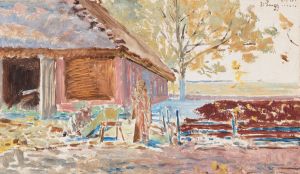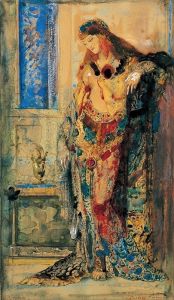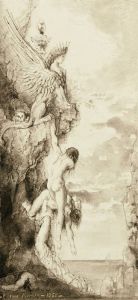
Self-portrait in armour with fiddles
A hand-painted replica of Jacek Malczewski’s masterpiece Self-portrait in armour with fiddles, meticulously crafted by professional artists to capture the true essence of the original. Each piece is created with museum-quality canvas and rare mineral pigments, carefully painted by experienced artists with delicate brushstrokes and rich, layered colors to perfectly recreate the texture of the original artwork. Unlike machine-printed reproductions, this hand-painted version brings the painting to life, infused with the artist’s emotions and skill in every stroke. Whether for personal collection or home decoration, it instantly elevates the artistic atmosphere of any space.
Jacek Malczewski, a prominent Polish painter associated with the Symbolist movement, is known for his unique and often enigmatic works that blend realism with fantastical elements. One of his intriguing pieces is "Self-portrait in Armour with Fiddles." This painting exemplifies Malczewski's characteristic style, which often includes self-portraits and allegorical themes.
Born in 1854 in Radom, Poland, Malczewski was deeply influenced by the socio-political climate of his time, particularly the struggle for Polish independence. His works frequently reflect themes of patriotism, mythology, and existential inquiry. Malczewski studied at the School of Fine Arts in Kraków and later in Paris, where he was exposed to various artistic movements that shaped his style.
"Self-portrait in Armour with Fiddles" is a compelling example of Malczewski's exploration of identity and symbolism. In this painting, Malczewski portrays himself wearing armor, a motif that recurs in his self-portraits. The armor can be interpreted as a symbol of protection or a reference to the historical and cultural battles faced by Poland. The inclusion of fiddles adds another layer of meaning, possibly alluding to the role of art and music in cultural identity and resistance.
Malczewski's use of armor in his self-portraits often suggests a connection to the knightly virtues and the romanticized notion of the artist as a warrior for cultural and national values. This theme resonates with the broader Symbolist movement, which sought to express the ineffable and explore the spiritual and emotional dimensions of human experience.
The painting's composition and color palette are characteristic of Malczewski's style. He often employed a muted yet rich color scheme, using light and shadow to create depth and emphasize the emotional tone of his subjects. His attention to detail and ability to convey complex narratives through imagery are evident in this work.
Malczewski's self-portraits are not merely depictions of his physical likeness but are deeply introspective, exploring his personal identity and the broader human condition. "Self-portrait in Armour with Fiddles" can be seen as a reflection on the artist's role in society and the enduring power of art to convey profound truths.
Throughout his career, Malczewski remained committed to exploring themes of national identity, mythology, and the human psyche. His works are celebrated for their symbolic richness and emotional depth, making him one of Poland's most esteemed artists. "Self-portrait in Armour with Fiddles" is a testament to his ability to weave personal and national narratives into a cohesive and thought-provoking visual language.
Jacek Malczewski passed away in 1929, leaving behind a legacy of art that continues to inspire and provoke thought. His paintings, including "Self-portrait in Armour with Fiddles," remain significant in the study of Polish art and the Symbolist movement, offering insights into the cultural and historical context of his time.






